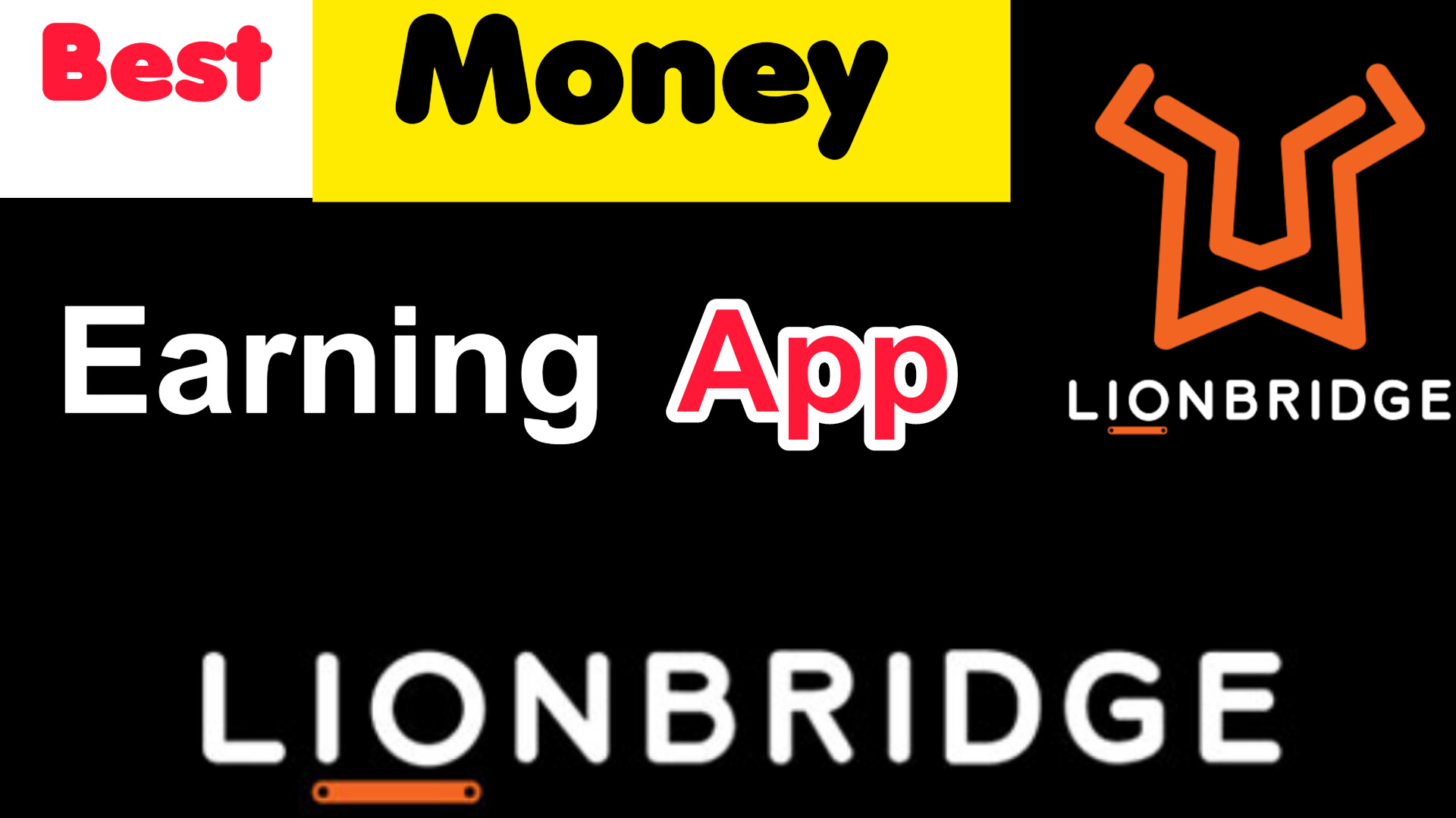How To Make Money From My Blog | How Can We Earn By Blogging

Dear Readers! If you have the query or question: “how to make money from my blog or how can we earn by blogging” in your mind, then this post is for you. Read this post till the end without skipping any sentence or line.
CONTENTS
Definition of Influential Blogger
Characteristics of Influential Blogger
1. Expertise
2. High-quality content
3. Engaged and loyal audience
4. Social media presence
5. Collaborations and partnerships
6. Trust and authenticity
7. Impact and influence
8. Recognition and accolades
How to Become an Influential Blogger?
1. Choose your niche
2. Define your target audience
3. Develop a content strategy
4. Create high-quality content
5. Build an attractive and user-friendly blog
6. Engage with your audience
7. Leverage social media
8. Collaborate and network
9. Provide value and solve problems
10. Be authentic and transparent
11. Continual learning and improvement
12. Consistency and persistence
How to make money becoming an Influential Blogger?
1. Sponsored content
2. Affiliate marketing
3. Advertisements
4. Digital products
5. Consulting or coaching
6. Speaking engagements and workshops
7. Brand ambassadorships
8. Online memberships or subscriptions
9. Sponsored events and collaborations
10. Content licensing and syndication
Where to make money as an Influential Blogger?
1. Your own blog
2. Social media platforms
3. Online marketplaces
4. Podcasting
5. Speaking engagements
6. Consulting or coaching services
7. Brand ambassadorships
8. Online memberships or subscriptions
9. Sponsored events and collaborations
10. Content licensing and syndication
•
CONCLUSION
•
Writer’s WordsYou may like to read this post:
Definition of Influential Blogger:
An influential blogger is an individual who possesses significant influence and impact within a specific niche or industry through their blog. They have built a dedicated following of readers who value their opinions, insights, and expertise. These bloggers have established themselves as thought leaders, trendsetters, and trusted sources of information within their respective fields. Their influence extends beyond merely sharing personal stories or experiences; they have the ability to shape opinions, drive conversations, and inspire action among their audience.
Characteristics of Influential Blogger:
Characteristics of influential bloggers include:
1. Expertise:
Influential bloggers possess extensive knowledge and expertise in their chosen niche. They are seen as authoritative figures and are recognized for their deep understanding of industry trends, best practices, and emerging developments.
2. High-quality content:
They consistently produce high-quality, engaging, and valuable content that resonates with their audience. Their blog posts are well-researched, informative, and often offer unique perspectives or insights that set them apart.
3. Engaged and loyal audience:
Influential bloggers have a strong and engaged community of readers who actively follow, comment on, and share their content. They have cultivated a loyal following through consistent engagement, responsive communication, and building personal connections with their audience.
4. Social media presence:
These bloggers leverage social media platforms to amplify their reach and engagement. They have a significant presence on various social media channels, effectively promoting their blog content and engaging with their audience across different platforms.
5. Collaborations and partnerships:
Influential bloggers often collaborate with other bloggers, brands, or industry experts. They engage in partnerships, sponsored content, or affiliate marketing, leveraging their influence to generate income and create mutually beneficial relationships.
You may like to read this post:
6. Trust and authenticity:
They prioritize maintaining the trust and authenticity of their audience. Influential bloggers are transparent about their affiliations, disclose sponsored content, and prioritize providing unbiased and honest opinions.
7. Impact and influence:
Influential bloggers have the ability to influence their audience’s opinions, decisions, and actions. Their recommendations, reviews, and insights carry weight, and their audience looks to them for guidance and inspiration.
8. Recognition and accolades:
Influential bloggers often receive recognition within their industry through awards, invitations to speak at conferences, media features, or collaborations with prominent brands. These acknowledgments further enhance their credibility and influence.
In short, an influential blogger is a trusted authority in their niche who produces high-quality content, engages with a loyal audience, leverages social media, collaborates with others, maintains authenticity, and has a real impact on the opinions and actions of their readers. They play a significant role in shaping conversations, trends, and industry developments within their chosen field.
How to Become an Influential Blogger?
Becoming an influential blogger takes time, effort, and strategic planning. Here is a step-by-step guide to help you on your journey to becoming an influential blogger:
1. Choose your niche:
Identify a specific niche or topic that you are passionate about and have expertise in. Narrowing down your focus will help you stand out and attract a dedicated audience.
2. Define your target audience:
Understand who your ideal readers are. Determine their demographics, interests, pain points, and aspirations. This will allow you to shape your content and messaging to resonate with your target audience effectively.
3. Develop a content strategy:
Plan your content strategy by identifying key themes, topics, and goals for your blog. Decide on the types of content you will produce, such as articles, tutorials, interviews, or reviews. Ensure that your content is valuable, unique, and aligned with the needs and interests of your target audience.
You may like to read this post:
4. Create high-quality content:
Consistently produce well-researched, informative, and engaging content. Take the time to refine your writing skills, use visuals effectively, and incorporate multimedia elements like images, videos, or infographics where appropriate.
5. Build an attractive and user-friendly blog:
Create a visually appealing and easy-to-navigate blog. Use a clean design, intuitive navigation, and responsive layout to enhance the user experience. Optimize your blog for search engines to improve its discoverability.
6. Engage with your audience:
Actively engage with your readers through comments, social media, and email. Respond to their comments and messages promptly, ask for their feedback, and encourage discussions. Building a rapport with your audience is essential for fostering a loyal and engaged community.
7. Leverage social media:
Utilize social media platforms to promote your blog, share your content, and engage with your audience. Identify which platforms are most relevant to your niche, and focus your efforts on building a strong presence and following.
8. Collaborate and network:
Seek opportunities to collaborate with other bloggers, influencers, or brands within your niche. Guest post on relevant blogs, participate in expert roundups, or co-create content with others in your field. Networking with like-minded individuals can expand your reach and credibility.
9. Provide value and solve problems:
Continually seek ways to provide value to your audience. Address their pain points, answer their questions, and offer practical solutions through your content. Strive to be a go-to resource in your niche.
You may like to read this post:
10. Be authentic and transparent:
Establish trust by being authentic and transparent with your audience. Share personal experiences, insights, and lessons learned. Disclose any sponsored content or affiliations and maintain honesty in your recommendations and reviews.
11. Continual learning and improvement:
Stay updated with industry trends, new developments, and best practices. Invest in your own education and skill development to continually enhance your expertise and value as a blogger.
12. Consistency and persistence:
Building influence takes time and persistence. Stay consistent in your content creation, engagement efforts, and personal branding. Be patient and persistent, and your influence will grow gradually.
Please keep in mind that each blogger’s journey is unique, so adapt these steps to your own style and goals. Focus on providing value, connecting with your audience, and staying true to your passion. With dedication and perseverance, you can become an influential blogger within your niche and make a positive impact in the online community.
How to make money becoming an Influential Blogger?
Becoming an influential blogger can open up various avenues for monetization. Here are some strategies to make money as an influential blogger:
1. Sponsored content:
Collaborate with brands and businesses that align with your niche and values. Create sponsored content in the form of product reviews, sponsored posts, or brand partnerships. Make sure to disclose any commercial relationships to maintain transparency with your audience.
2. Affiliate marketing:
Join affiliate programs and promote products or services that you genuinely recommend to your audience. Earn a commission for each successful referral or sale made through your affiliate links. Incorporate affiliate links organically within your content or use them in product roundups and reviews.
You may like to read this post:
3. Advertisements:
Utilize display ads on your blog to generate income. You can work with ad networks like Google AdSense or reach out to brands directly for advertising opportunities. Optimize the placement and design of your ads to ensure they don’t disrupt the user experience.
4. Digital products:
Create and sell digital products that cater to your audience’s needs. These can include e-books, online courses, templates, guides, or exclusive content. Leverage your expertise to develop valuable resources that your audience is willing to pay for.
5. Consulting or coaching:
Offer consulting services or one-on-one coaching sessions within your niche. Share your knowledge and provide personalized guidance to individuals or businesses seeking expert advice. Establish your credibility as an influential blogger to attract clients.
6. Speaking engagements and workshops:
Leverage your influence to secure speaking engagements at conferences, seminars, or industry events. Offer workshops or webinars where you can share your expertise and interact with your audience directly. Charge a fee for your participation or offer premium access to exclusive sessions.
7. Brand ambassadorships:
Establish long-term partnerships with brands as a brand ambassador. Represent the brand, promote their products or services, and create ongoing content to raise awareness and drive engagement. Negotiate compensation that aligns with the long-term collaboration.
8. Online memberships or subscriptions:
Create a membership program or premium subscription plan where subscribers gain access to exclusive content, resources, or a community. Offer additional perks and benefits to incentivize your audience to become paying members.
9. Sponsored events and collaborations:
Organize or collaborate on sponsored events, workshops, or webinars. Partner with brands or industry experts to create valuable experiences or learning opportunities for your audience. Generate revenue through ticket sales, sponsorships, or partnerships.
You may like to read this post:
10. Content licensing and syndication:
Explore opportunities to license or syndicate your content to other platforms or media outlets. Earn revenue by granting others the right to use your content for their websites, publications, or online courses.
Don’t forget that building a loyal and engaged audience should be your priority. Focus on providing value, maintaining authenticity, and nurturing relationships with your readers. As your influence grows, opportunities for monetization will naturally arise. Choose monetization strategies that align with your brand and audience, and always prioritize maintaining trust and delivering quality content.
Where to make money as an Influential Blogger?
As an influential blogger, there are several platforms and avenues where you can monetize your influence and make money. Here are some places where you can explore opportunities to generate income:
1. Your own blog:
Your blog is a primary platform where you can monetize your influence. Implement monetization strategies such as sponsored content, affiliate marketing, display ads, or selling digital products directly on your blog.
2. Social media platforms:
Leverage your influence on social media platforms like Instagram, YouTube, Facebook, Twitter, or LinkedIn. Collaborate with brands for sponsored posts, brand partnerships, or influencer campaigns. Utilize features like Instagram’s Shopping or YouTube’s monetization program to earn income directly from these platforms.
3. Online marketplaces:
Sell your digital products or resources on online marketplaces like Amazon, Etsy, Gumroad, or Teachable. These platforms provide a ready infrastructure for selling e-books, online courses, templates, or other digital assets to a wide audience.
4. Podcasting:
If you have a podcast, you can monetize your episodes through advertising, sponsorships, or partnerships with relevant brands. Use podcast hosting platforms like Anchor, Libsyn, or Podbean to explore ad placement opportunities.
You may like to read this post:
5. Speaking engagements:
Utilize your influence to secure speaking engagements at conferences, industry events, or webinars. Speak on panels, deliver keynote speeches, or offer workshops where you can share your expertise and receive speaking fees.
6. Consulting or coaching services:
Leverage your influential status to offer consulting or coaching services within your niche. Provide personalized guidance and expertise to clients and charge a fee for your services. Use platforms like Clarity.fm or LinkedIn ProFinder to connect with potential clients.
7. Brand ambassadorships:
Establish partnerships as a brand ambassador for companies and represent their brand in your content. Brand ambassadorships often involve long-term collaborations and can provide a steady income stream as you promote products or services over an extended period.
8. Online memberships or subscriptions:
Develop a membership program or premium subscription plan on your blog or through platforms like Patreon. Offer exclusive content, resources, or community access to paying members.
9. Sponsored events and collaborations:
Organize or participate in sponsored events, workshops, or webinars. Partner with brands or industry experts to create valuable experiences for your audience, and generate revenue through ticket sales, sponsorships, or collaborations.
10. Content licensing and syndication:
Explore opportunities to license or syndicate your content to other platforms or media outlets. Earn income by granting others the right to use your content in their publications, websites, or online courses.
CONCLUSION:
Don’t forget to choose monetization options that align with your niche, values, and target audience. It’s important to maintain the trust and authenticity you’ve built with your readers throughout your monetization efforts. Evaluate each opportunity based on its potential income, relevance to your brand, and long-term sustainability.
You may like to read this post:
Writer’s Words:
I hope you have gotten complete answer of your query and question: “how to make money from my blog or how can we earn by blogging”.
I strongly believe that your queries have been answered satisfactorily and hope you may have liked this post. In this regard, if you have any question in your mind or you want to get more information and guidance, then ask by commenting on this post. I will definitely give a satisfying answer to your question. Please like and share this post to encourage me as well as help and guide others. Also follow my blogger site so that my new upcoming posts can reach you easily. Thanks for taking the time to read the post.









